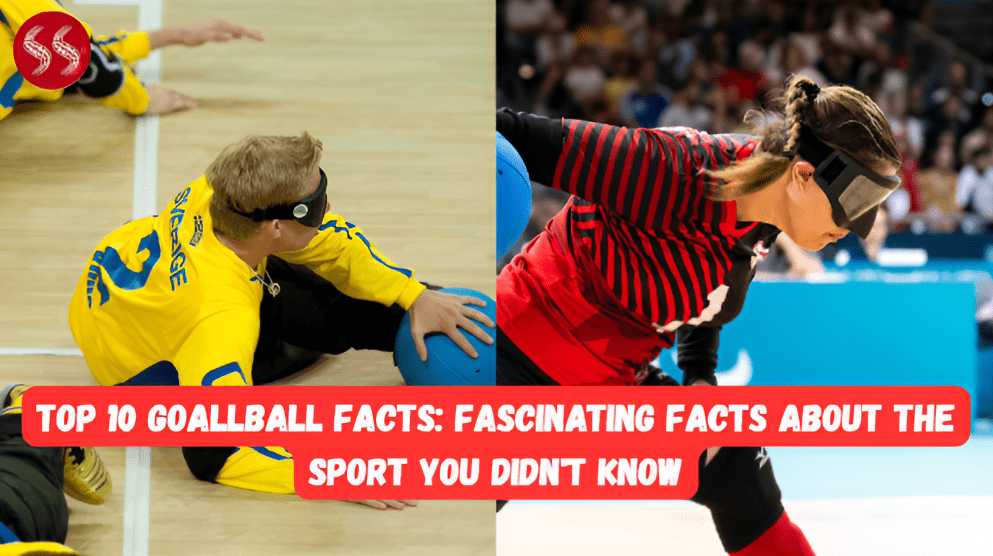Goalball is one of the most unique and thrilling sports in the world, yet it remains a mystery to many. As the only team sport specifically designed for athletes who are blind or visually impaired, it offers a fascinating blend of sound, strategy, and pure athletic instinct. When you watch a game, the silence of the crowd and the intensity of the players are palpable, but there is so much more to this sport than meets the eye (or in this case, the ear).
A deep dive into the sport’s history, rules, and equipment reveals a world of incredible facts that even the most avid sports fans might not know. This list of Top 10 Goallball Facts is a journey into the heart of a sport that challenges conventional notions of what a game can be.
The design of goalball is a masterclass in accessibility and fairness. Every element, from the court’s tactile markings to the specific weight of the ball, is meticulously crafted to ensure that all players, regardless of their degree of visual impairment, can compete on an equal footing. This attention to detail is just one of the many reasons why this is a sport worthy of a closer look.
Our list of Top 10 Goallball Facts will uncover surprising truths about the game, such as its connection to World War II veterans and the intricate communication systems used by players. We will explore the physics of the ball, the strict rules governing silence, and the incredible physicality required to play at an elite level. This is our definitive guide to the Top 10 Goallball Facts that will change the way you see this incredible sport.
Top 10 Goallball Facts You Didn’t Know:
10. The Sport Was a Rehabilitation Tool for War Veterans
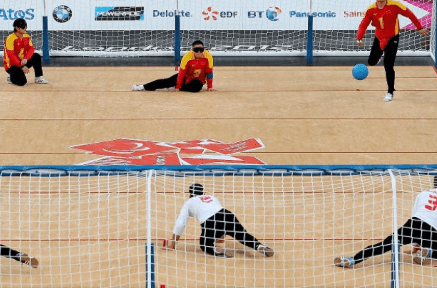
Goalball’s origin story is one of the most powerful and compelling of any sport. It was created in 1946 by Austrian Hanz Lorenzen and German Sepp Reindle as a form of rehabilitation for visually impaired veterans who had returned from World War II. The goal was to develop a game that would help these veterans stay physically active, regain their confidence, and rebuild their lives. This historical context is one of the key factors that makes this a list of the most important of all the Top 10 Goallball Facts.
The sport was designed with a specific purpose, and its rules were a reflection of this. The use of a ball with bells inside and the tactile court lines allowed players to navigate the court using only sound and touch, making it a perfect game for those with visual impairments. The fact that goalball started as a tool for recovery and evolved into a globally competitive Paralympic sport is a testament to its enduring appeal and its power to change lives. This powerful history is what makes this fact a crucial entry on our list of Top 10 Goallball Facts. The origin story is just one of the fascinating of the Top 10 Goallball Facts.
| Stat | Goalball was first featured as a demonstration sport at the 1972 Paralympic Games in Heidelberg, Germany. |
9. A Goalball Weighs More Than a Basketball
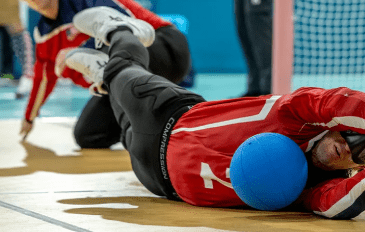
The official goalball is a unique piece of equipment, and its weight is a surprising fact for many. A goalball weighs 1.25 kilograms (2.75 pounds), which is significantly heavier than a standard basketball. The ball’s weight, combined with the fact that it contains bells, gives it a distinct sound and a predictable roll, which is essential for the players to track its movement. The weight is a key element of the game, and a major reason this is a crucial point in our list of Top 10 Goallball Facts.
The weight of the ball also contributes to the physicality of the sport. Players must block the ball with their bodies, and the impact of a fast-moving, heavy ball can be intense. The sheer force behind some of the throws, which can reach speeds of up to 60 miles per hour, is a testament to the power of the athletes. The heavy ball is a key component of the game’s intense physical nature, making this a great entry for our list of Top 10 Goallball Facts. The physics of the ball are one of the most interesting of all the Top 10 Goallball Facts.
| Stat | The official goalball has a circumference of 76 centimeters and contains eight holes to allow the sound of the bells to be heard clearly |
8. The Court is Lined with String
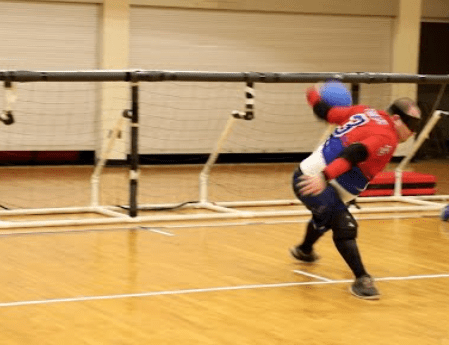
While goalball players cannot see, they can “see” the court through their sense of touch. The court is marked with tactile lines, which are made by placing a string or cord underneath a tape line. This allows players to feel the lines with their hands or feet, enabling them to orient themselves, know their position on the court, and align their body for a shot or a defensive block. This tactile system is a vital component of the game’s accessibility, and one of the most important of the Top 10 Goallball Facts.
The tactile lines are a clever and effective way to ensure a level playing field for all athletes, regardless of their visual impairment. Players can feel the lines to know where the goal is, where their defensive area is, and where the throwing lines are. This system is a core part of the sport’s design, and a major reason why this is a crucial entry on our list of Top 10 Goallball Facts. The tactile court is a perfect example of the sport’s ingenuity, and a key element of the Top 10 Goallball Facts.
| Stat | The goalball court measures 18 meters long and 9 meters wide, the same size as a volleyball court. |
7. There is a “10-Second” Rule
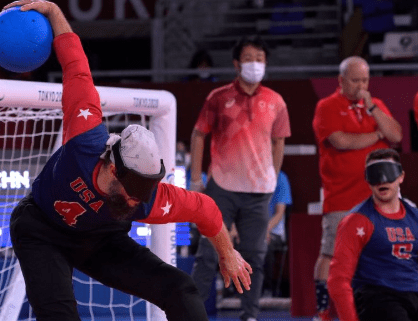
Goalball is a fast-paced game, and its rules are designed to keep the action moving. One of the most important rules is the “10-second” rule, which states that a defending team must throw the ball back across the center line within 10 seconds of gaining possession. If a team fails to do so, a penalty is called, and the opposing team is awarded a penalty shot. This rule is a key component of the game’s dynamic nature, and a major reason it is on our list of Top 10 Goallball Facts.
The 10-second rule is a constant source of pressure for the players, who must act quickly and decisively to avoid a penalty. It forces teams to be well-coordinated and to have a clear plan for both offense and defense. This rule is a great example of how the sport’s regulations are designed to enhance the flow of the game and to prevent stalling. The constant pressure of the clock is what makes this one of the most exciting of all the Top 10 Goallball Facts.
| Stat | The 10-second rule is one of the most common penalties in goalball, highlighting its importance in the game. |
6. Fans Must Remain Silent During Play

Goalball is a unique spectator sport, and its atmosphere is unlike any other. Fans are asked to remain completely silent during play to allow the athletes to hear the bells inside the ball and to listen to their teammates’ communication. Cheering is only allowed after a goal is scored or during a stoppage in play, such as a timeout or a penalty. This strict rule is a key part of the game’s unique culture and a major reason it is on our list of Top 10 Goallball Facts.
The silence of the crowd is a powerful testament to the players’ incredible ability to rely on their other senses. It creates an atmosphere of intense concentration and focus, and it allows the audience to fully appreciate the skill and strategy on display. The “sound of silence” is a core component of the goalball experience, making this a great entry for our list of Top 10 Goallball Facts. The rule about silence is a unique aspect that makes goalball stand out, and a great addition to the Top 10 Goallball Facts.
| Stat | A “noise” penalty can be called on a team if a player or a coach makes noise during a throw, as it can be a distraction to the opposing team. |
See More:
5. All Players Must Wear Eyeshades
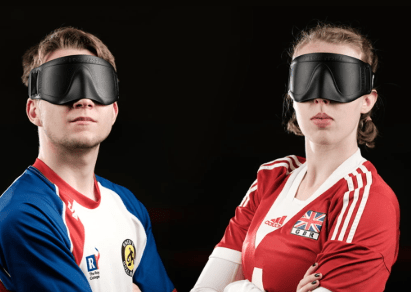
Even though goalball is a sport for athletes who are blind or visually impaired, all players on the court must wear a blackout eyeshade. This rule is in place to ensure that all players, regardless of their level of visual impairment, are competing on an equal footing. This rule is a key component of the sport’s fairness and its commitment to a level playing field. The universal use of eyeshades is a defining characteristic of goalball, and a key reason it is on our list of Top 10 Goallball Facts.
The eyeshades ensure that a player with partial sight is not at an advantage over a player who is totally blind. This simple rule eliminates any visual cues and forces all players to rely solely on their sense of hearing and touch. The eyeshades are a symbol of the sport’s commitment to equality and a major reason why this is a crucial entry on our list of Top 10 Goallball Facts. The way the sport equalizes competition is one of the most inspiring of the Top 10 Goallball Facts.
| Stat | In addition to eyeshades, some players wear eye patches underneath to ensure no light can be seen |
4. There Are Only Three Player Positions
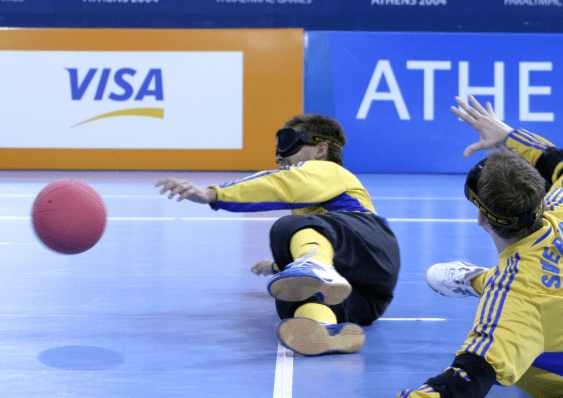
A goalball team consists of three players on the court at any one time, and each player has a specific role. The positions are center, right wing, and left wing. The center player is the primary defender, while the wings are often the team’s main offensive threats. The strategic placement of these three players is what determines a team’s success, and a major reason this is on our list of Top 10 Goallball Facts.
The three-player system forces teams to be highly coordinated and to have a clear plan for both offense and defense. Players must work together to create a wall of bodies to block the goal, and they must communicate constantly to ensure that there are no gaps in their defense. The strategic depth of the three-player system is a great example of the sport’s complexity, making this a key entry for our list of Top 10 Goallball Facts. The specialized roles of each player are what make this one of the most interesting of the Top 10 Goallball Facts.
| Stat | A goalball court has goals that span the entire 9-meter width of the court, making the three-player defense a monumental task. |
3. The Ball Must Hit the Floor at Least Once
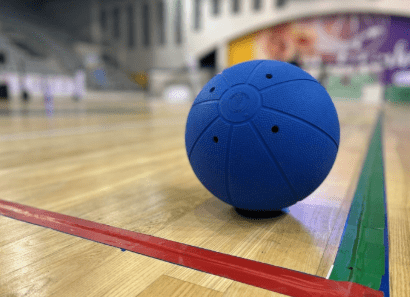
In goalball, a throw is not as simple as launching the ball at the opposing team’s goal. A throw must touch the floor at least once in the thrower’s landing area and must touch the neutral zone (the middle third of the court) at least once. If a throw does not meet these requirements, a “High Ball” or “Long Ball” penalty is called, and the opposing team is awarded a penalty shot. This rule is a key component of the game’s fairness and its commitment to a level playing field, and a major reason this is on our list of Top 10 Goallball Facts.
The rule is in place to ensure that the ball makes enough noise for the defending team to hear and react to it. A throw that is too high or too long can be difficult to track, and the rule prevents teams from using unfair tactics. The strictness of the throwing rules is a great example of the sport’s commitment to fair play, making this a crucial entry for our list of Top 10 Goallball Facts. The specific throwing rules are what make goalball so unique, and a perfect addition to the Top 10 Goallball Facts.
| Stat | A “High Ball” penalty is called if the ball does not touch the ground in the thrower’s landing area, which is the first 6 meters of the court |
2. A Player Can Be Penalized for “Illegal Defense”
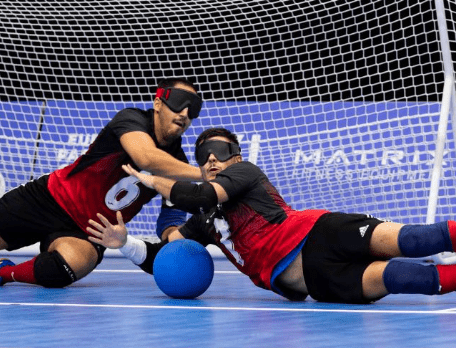
In goalball, a player can be penalized for “Illegal Defense” if they are not in the correct position when the ball is thrown. This rule is in place to prevent teams from using a “scattered” defense, which can make it more difficult for the attacking team to score. The rule forces teams to have a structured and coordinated defense, and it is a key component of the game’s strategic depth. The penalty for “Illegal Defense” is a great example of the sport’s complexity, and a major reason it is on our list of Top 10 Goallball Facts.
The “Illegal Defense” rule is one of the more technical rules in goalball, and it is a constant source of tension for the players. A small mistake in positioning can result in a penalty, which can be a game-changer. The strictness of the defensive rules is what makes goalball such a challenging and rewarding sport, and a perfect entry for our list of Top 10 Goallball Facts. The intricacies of the rules are what make this one of the most interesting of all the Top 10 Goallball Facts.
| Stat | An “Illegal Defense” penalty can result in a penalty throw for the opposing team, which is a great scoring opportunity. |
1. The Game Has No Visual Referee Signals
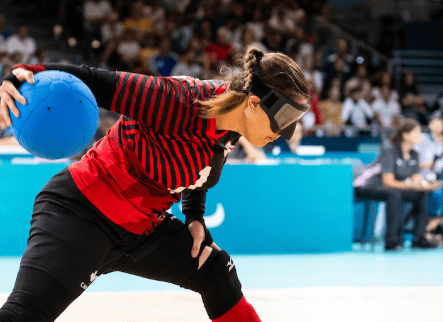
Since the players cannot see, the referees in a goalball game cannot use visual signals to communicate. All commands and penalties are communicated verbally, with the referee using a clear and distinct voice to announce the status of the game. The verbal communication system is a key part of the sport’s accessibility and its commitment to a level playing field. The fact that the referees must rely on verbal cues is what makes this a deserving number one on our list of Top 10 Goallball Facts.
The verbal communication system is a testament to the sport’s ingenuity and its ability to adapt to the needs of its athletes. It ensures that all players, regardless of their visual impairment, can understand what is happening on the court. The reliance on verbal commands is a perfect example of the sport’s unique nature, and a major reason why this is at the top of our list of Top 10 Goallball Facts. The way the referees communicate is the greatest of all the Top 10 Goallball Facts.
| Stat | The referee’s whistle is the only non-verbal sound allowed during play, signaling the start and stop of a play. |
FAQs :
Q1: Can a goalball player with some vision play without eyeshades?
A1: No, all players must wear a blackout eyeshade to ensure that all competitors are on an equal footing, a crucial fact from our list of Top 10 Goallball Facts.
Q2: Why do goalball spectators have to be quiet?
A2: Spectators must be quiet so that the players can hear the bells inside the ball and communicate with their teammates, a unique aspect of the sport and a key point in our list of Top 10 Goallball Facts.
Q3: What is the primary purpose of the bells inside a goalball?
A3: The bells are used to allow players to hear the ball and track its movement, a fundamental part of the game and a major point in our list of Top 10 Goallball Facts.
Read More:
- Top 10 Women in Polo : Fierce Women Who Changed the Sport of Polo
- Top 10 Polo Countries : Countries with Elite Polo Traditions

